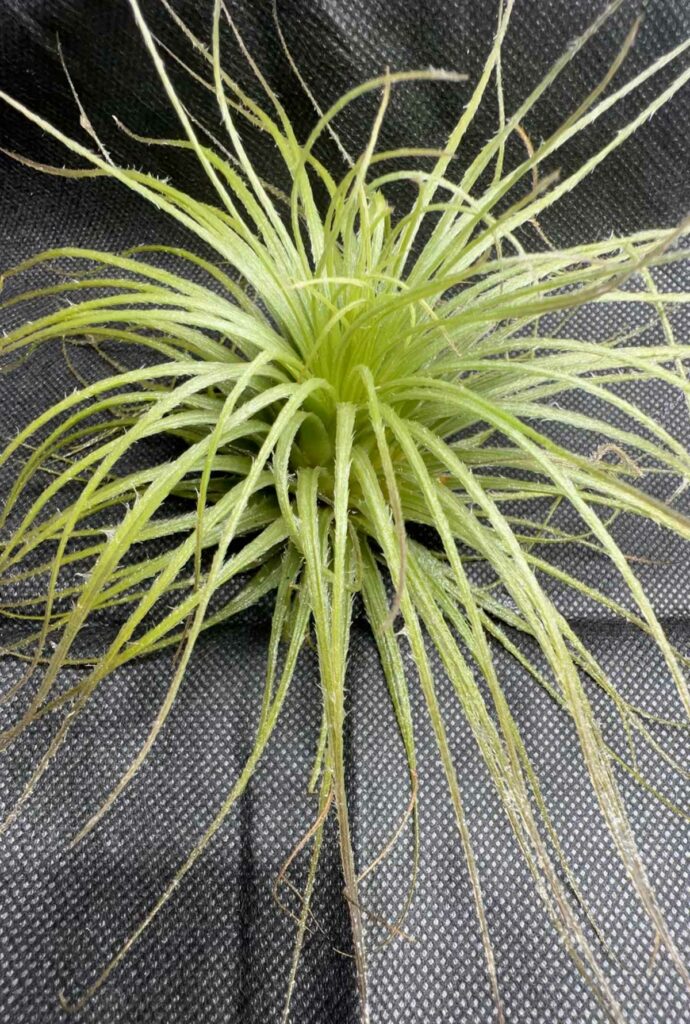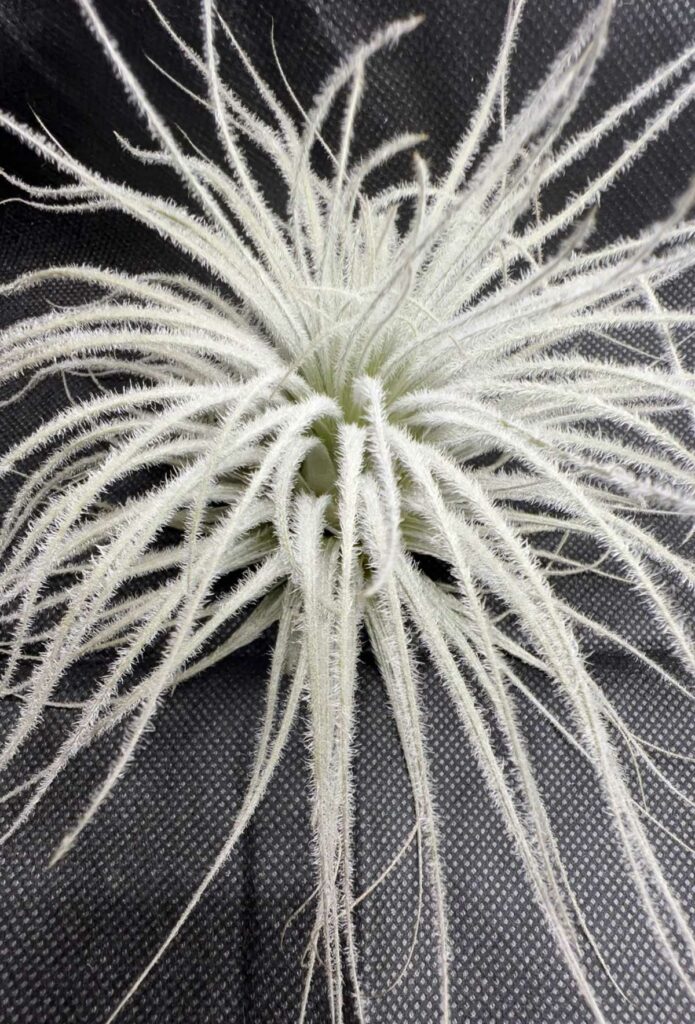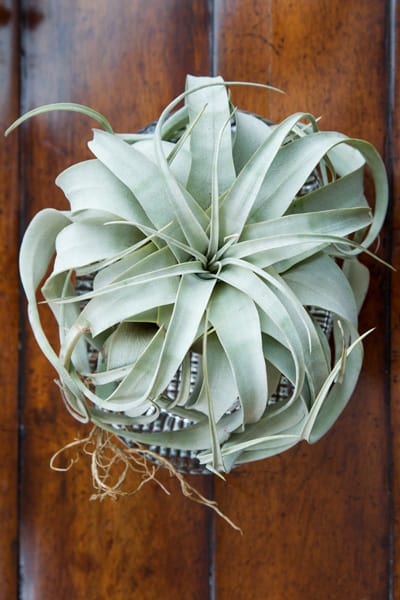Some of the links in this post may be affiliate links.
Tillandsia tectorum, a remarkable air plant species that is native to Peru and Ecuador, is one of the easiest Tillandsia species that you can grow indoors, provided that you can supply sufficient light. Keep reading to discover how to best care for this beauty!

Table of Contents
CARING FOR TILLANDSIA TECTORUM
Tillandsia tectorum is one of the most drought tolerant air plants that you can grow indoors. In general, the grayer an air plant is, the more drought tolerant it is.
I’ll provide some important care tips below, along with information on how it grows in its natural environment so that you can best understand how to care for this intriguing species.
1. LIGHT
Tillandsia tectorum is a lithophyte (growing on rocks) in dry, sunny, high elevation regions in Peru and Ecuador.
They are commonly called the “rock air plant” or “roof air plant” since the name “tectorum” is derived from the Latin word for roofing.
The unique appearance of Tillandsia tectorum is due to the large, fuzzy trichomes. Trichomes are simply hairs or scales that will serve a few purposes:
- Due to the sunny, high altitude native environment of these plants, the abundant trichomes help to reflect the strong solar radiation.
- Trichomes also help to capture water, as well as nutrients blowing in the wind.
Indoors, give your Tillandsia tectorum the sunniest window that you have. At least half a day of direct sun, or more, is beneficial.
If you don’t have any particularly sunny windows, you can grow them under a bright grow light.

These are high light plants, so if you don’t have the appropriate conditions, it’s probably best to skip this plant.
2. WATER
Normally, I like to soak air plants for a while to water them, but for this species, I recommend either misting your plant thoroughly, or giving it a very quick dunk in a bowl of water (in and out immediately).
Then simply turn the plant upside down to allow excess water to drip away so that it doesn’t rot.
In nature, for the majority of the year, these plants get watered by the morning dews.
It is best to use mineral water, spring water, or rain water. These water sources contain some nutrients to keep your plant happy enough. You can use tap water though as well as the next best option.
Two water types to avoid:
- Distilled water. The reason is because it is too pure for Tillandsia plants and distilled water is devoid of any nutrients.
- Water that has gone through a water softener. This water normally contains sodium which is toxic to plants.
When you wet the plant, it will turn a greenish color, and as it dries, the characteristic gray color will return.
Under average indoor conditions, your plant should dry out in about 1-2 hours, and it does need to dry quickly.
Here is what my Tillandsia tectorum looks like after I dunked the plant in water quickly and took it right out.

After it dried for about 2 hours, it returned to its typical appearance.

As far as frequency of watering, water them every 1-3 weeks, depending on your conditions. If your indoor air is typically very dry, then once a week will be great.
If you have your plant in a more humid environment, you can water it much less frequently.
3. FERTILIZING
Since these plants come from a nutrient-poor environment, they do not need much fertilizer. In fact, overfeeding may cause the foliage to burn.
I would recommend either a Tillandsia fertilizer, diluted at 1/4 strength, and used once every 1-2 months, or…
You can also use a fertilizer like Dyna-Gro Grow instead. I simply add 1/4 teaspoon per gallon of water and use that instead.
Dyna-Gro Grow is a nutritionally complete, urea-free fertilizer and I use it for all my air plants, as well as all my leafy tropicals.
4. TEMPERATURE
These plants are best grown in temperatures in the 50-80F range (10-27C).

FREQUENTLY ASKED QUESTIONS
Does Tillandsia tectorum flower?
Yes, just like any air plant, it will only flower once in its life cycle, and then start to produce pups. The flowers are a soft pink with violet bracts.
Here is one of my plants that flowered in my greenhouse.

Here is a closeup of the inflorescence with small purple flowers.

Do you have to remove Tillandsia tectorum pups?
No. After the mother plant flowers, it will begin a slow process of dying, but it should produce pups. You can leave any and all pups attached, or you can carefully just detach them once they are about 1/4 the size of the parent plant.
Why is my Tillandsia tectorum getting brown tips?
Typically for this species, brown tips will result from not watering your plant enough.
RELATED CONTENT
Care tips for Tillandsia xerographica, another very drought tolerant air plant.
Care tips for air plants in general.
Be sure to check out the easiest to grow air plant varieties.







Stephanie
Monday 7th of August 2023
Thanks for the great tips! I bought a jumbo sized last year, and after a few months it grew a huge flower stem and has the beautiful tiny purple flowers. It's just hanging out and seems happy. I grow it and my smaller tectorums under a grow light. I lightly mist a few times weekly as I have a very dry environment. I've gone longer but the leaves become more shriveled-looking. Very low-maintenance and slow growers. Love the color and trichomes!
Raffaele
Monday 7th of August 2023
You're very welcome Stephanie! I actually have one that is blooming right now too. They're such wonderful plants!